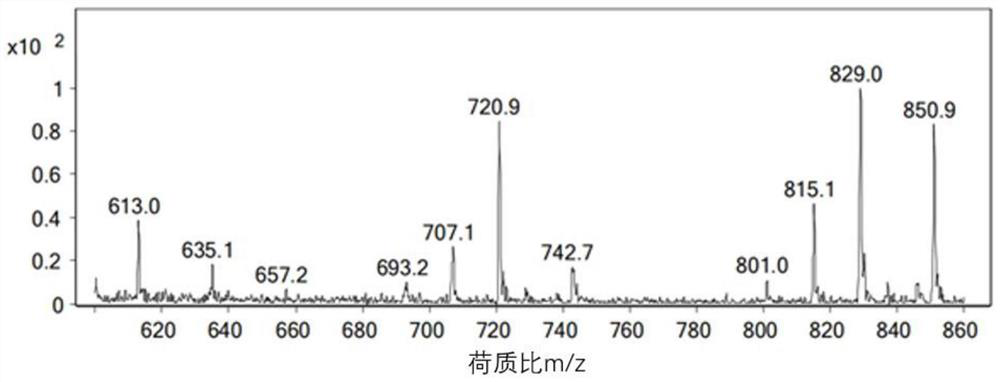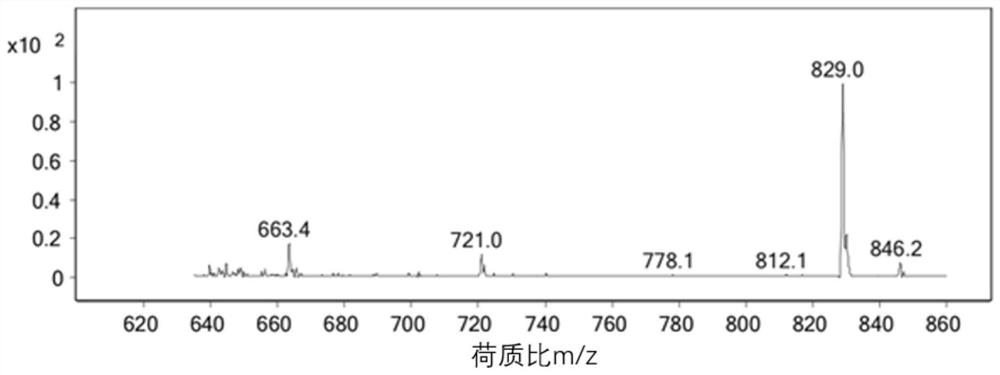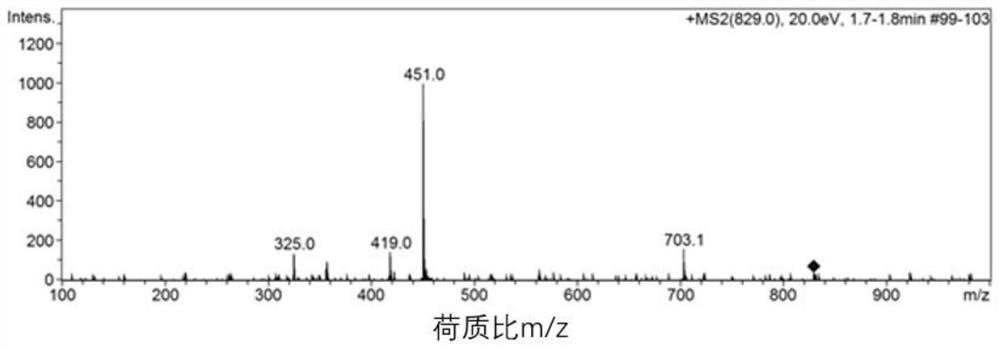Phytic acid analysis method based on trimethylsilyl diazomethane methyl esterification
A technology of trimethylsilyl diazomethane and an analytical method, applied in the detection field, can solve problems such as no relevant reports and unclear detection, and achieve the effects of improving sensitivity, improving sensitivity and reproducibility, and simple ionic structure
- Summary
- Abstract
- Description
- Claims
- Application Information
AI Technical Summary
Problems solved by technology
Method used
Image
Examples
Embodiment 1
[0063] Embodiment 1: The working curve making of phytic acid detection under the condition of adding EDTA
[0064] Prepare a phytic acid standard stock solution with a concentration of 100 μg / mL (the solvent is water-methanol, the volume ratio is 1:9), take 1.0 mL of the stock solution, add 0.5 mol / L hydrochloric acid to adjust the pH value of the solution to 6.5, and add 150 μL trimethyl Silyl diazomethane was reacted at 25°C for 60 min, and 50 μL of formic acid was added to terminate the reaction to obtain a derivatization product solution; The phytic acid product solution was diluted step by step into 100ng / mL, 50ng / mL, 10ng / mL, 5ng / mL, 1ng / mL, 0.5ng / mL standard solution series, and analyzed by liquid chromatography-mass spectrometry respectively, and the peak area was used to analyze the phytic acid Concentration do work curve such as Figure 6 As shown, the correlation coefficient r 2 >0.999, the parameters related to the working curve are listed in Table 2. Reproducib...
Embodiment 2
[0068] Embodiment 2: the detection of phytic acid in beverage
[0069] Take 100 μL of a beverage, add hydrochloric acid with a concentration of 0.2 mol / L, adjust the pH value to 6.0, add 900 μL methanol, add 250 μL TMSD, react at 25 ° C for 60 minutes, and 10 μL ethylenediaminetetraacetic acid (EDTA) with a concentration of 10 mg / mL The solution was terminated by adding 50 μL of formic acid, blown with nitrogen, fixed to volume and filtered, then analyzed by liquid chromatography-mass spectrometry. Its LC-MS MRM selected ion diagram is shown in Figure 7 , Substituting the obtained peak area into the linear regression equation in Table 1 can obtain the content of phytic acid in the beverage. The content of phytic acid in the recorded beverage is 1.07 μg / mL. According to the standard recovery experiment, the recovery rate is 94.9%.
Embodiment 3
[0070] Embodiment 3: the detection of phytic acid in rice
[0071] Take 1g of a certain brand of rice after crushing, add hydrochloric acid with a concentration of 0.1mol / L, adjust the pH value to 6.5, add 10mL of methanol-water (V:V=1:9) and 10μL of ethylenediamine with a concentration of 10mg / mL Tetraacetic acid (EDTA) solution, magnetically stirred for 2 hours, centrifuged for 15 minutes; 100 μL of supernatant was taken, 900 μL of methanol was added, 300 μL of TMSD was added to react at room temperature for 90 minutes, and 50 μL of formic acid was added to terminate the reaction. LC-MS MRM selected ion diagram see Figure 8 . Substitute the obtained peak area into the linear regression equation in Table 2 to obtain the content of phytic acid in rice. The content of phytic acid in rice is 6.98mg / g, and the recovery experiment of adding standard records, the recovery rate is 118.6%.
PUM
| Property | Measurement | Unit |
|---|---|---|
| Concentration | aaaaa | aaaaa |
Abstract
Description
Claims
Application Information
 Login to View More
Login to View More - R&D
- Intellectual Property
- Life Sciences
- Materials
- Tech Scout
- Unparalleled Data Quality
- Higher Quality Content
- 60% Fewer Hallucinations
Browse by: Latest US Patents, China's latest patents, Technical Efficacy Thesaurus, Application Domain, Technology Topic, Popular Technical Reports.
© 2025 PatSnap. All rights reserved.Legal|Privacy policy|Modern Slavery Act Transparency Statement|Sitemap|About US| Contact US: help@patsnap.com



